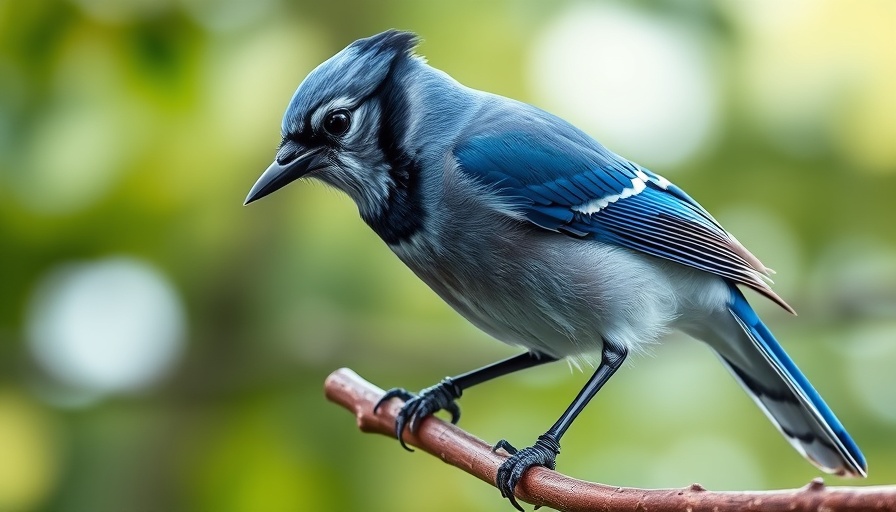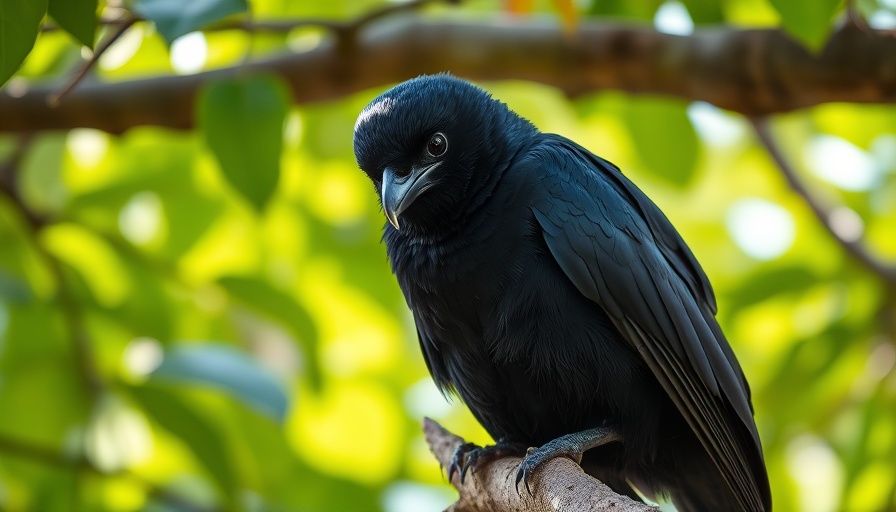
The Remarkable Blue Jay: Nature's Ingenious Bird
When one thinks of iconic birds in North America, the blue jay often takes center stage. Known scientifically as Cyanocitta cristata, this bird is more than just a pretty face; it is a remarkable creature exhibiting intelligence and social behavior akin to its relatives, the crows. Ranging from Florida to Canada, blue jays are adaptable birds found not only in their preferred mixed hardwood forests but also thriving in suburban landscapes across New Jersey.
Food Caching: A Smart Survival Strategy
Blue jays are recognized for their impressive foraging behavior, particularly their ability to cache food. They bury acorns and seeds in the ground or hide them in tree crevices, assuring a supply for future use, especially during winter months. This behavior resonates with scientific studies highlighting that food storage is a survival strategy among intelligent birds, opening discussions about resource management in nature.
Monogamous Partners: Life Mates for Life
In addition to their foraging skills, blue jays display strong pair bonding. They are monogamous and often mate for life, which speaks volumes about their social structures. During the breeding season, which stretches from March to July, both male and female work collaboratively to build the nest—a true partnership. Their nests, typically built in evergreens, are crafted from twigs and other plant materials, showcasing not only their resourcefulness but also their commitment to their young.
The Lifespan and Learning Curve
Blue jays can live up to 20 years in the wild, although the average life expectancy tends to be around seven years. This longevity, combined with their problem-solving skills—such as using sticks to extract insects—highlights an intelligence that fascinates bird watchers and researchers alike. Their ability to adapt and learn might just be the reason they’ve become such notable residents in our backyards.
Conclusion: Observing Blue Jays and Their Behavior
Understanding the blue jay’s behavior and habits can inspire appreciation for these birds and their role in the ecosystem. By observing their activities, you become a part of their narrative—a living testament to the bonds of nature. Whether you are a seasoned ornithologist or a casual bird watcher, learning more about these clever creatures enriches our understanding of wildlife. Visit gcnatureclub.org to discover more about local events and nature opportunities.
 Add Row
Add Row  Add
Add 




Write A Comment